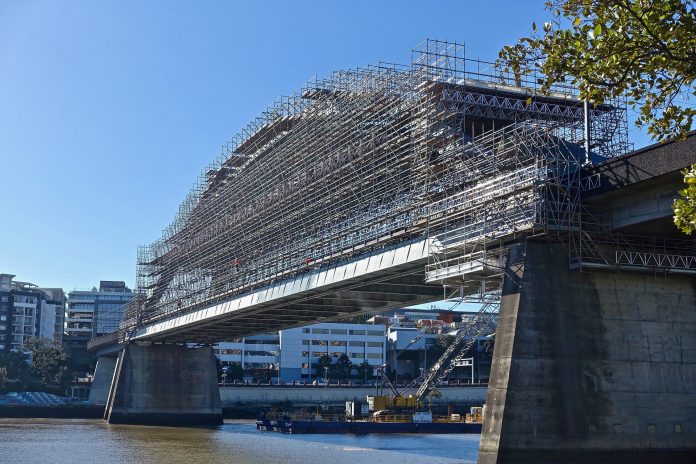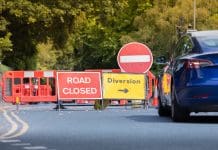With major challenges on the horizon – including the growth and ageing of the population, coupled with the need to adapt to a changing climate – it is essential that we take a long-term approach to infrastructure planning, says Keith Howells FICE, trustee of the Institution of Civil Engineers
The National Infrastructure Commission’s (NIC) second National Infrastructure Assessment (NIA2) aims to do exactly that.
While work on NIA2 is already underway, it won’t be published until 2023. With the opportunity to shape NIA2’s priorities, the Institution of Civil Engineers (ICE) has published a paper with recommendations – grouped into three broad areas – that the second National Infrastructure Assessment must cover.
Changing demand drivers
Before anything else, we need to look at what has changed since the first National Infrastructure Assessment in 2018.
Most prominently, the UK has committed to reach net zero greenhouse gas emissions by 2050, which will require huge investment in, and changes to, our infrastructure systems.
The Covid-19 pandemic has very likely changed – or at least sped up changes to – the demand profile for infrastructure and highlighted our reliance on digital infrastructure networks.
The need to address regional socio-economic inequalities has gained a new dimension with the government’s “levelling-up” agenda – though we need clarity on exactly what it wants to achieve from it.
What should be prioritised in NIA2?
Firstly, we need to prioritise climate action and sustainability. The net zero target is less than 30 years away and will require both a transformation of our infrastructure systems and the minimisation of carbon emissions produced through construction and operation.
Secondly, we need to look to our existing infrastructure assets and networks. Understanding their condition and ensuring we can maintain and upgrade them will be vital in saving both costs and carbon, as well as making them more resilient to the impacts of climate change.
And thirdly, we need to consider how we actually deliver all of this. Reformed governance structures, building up local capability and understanding what capacity we need are all vital to ensure the public get the infrastructure they need.
Addressing net zero
At the time of the first NIA, much less was known about how we would decarbonise our infrastructure. The government’s recent Net Zero Strategy presents a sound analysis of the issues and an ambitious plan. It may lack detail in some areas, such as expected emissions savings and how much of the transition will be funded, but these will evolve as experience develops, technical advances come to market and methods of finance unfold.
Over the coming decades we can expect the continued roll-out of technology such as electric vehicle charging infrastructure, significantly more renewables, carbon capture and storage, energy storage, commercial heat pumps and more. This is why we recommend that NIA2 aligns as closely as possible with the Climate Change Committee’s Sixth Carbon Budget, which sets out evidence-based pathways to decarbonisation.
There is no formal system of governance for translating net zero targets into action. Our infrastructure operates as a “system of systems” and cannot be considered in isolation. NIA2 needs to consider what governance system can best deliver net zero infrastructure, so we can have a clear, fair and cost-effective net zero transition.
Importantly, we also need to look at what we are building and how we are building it – an issue that ICE president Rachel Skinner has recently brought to the fore.
Projects committed to now will lock-in carbon emissions to 2050 and beyond. The upkeep and improvement of existing infrastructure should be reviewed within NIA2 to avoid rebuilding where possible and minimise the impacts of embodied and operational carbon.
Making the most of our existing infrastructure
Most of the infrastructure that will support us to 2050 already exists – and will do so for many years after. With the impacts of climate change becoming ever-more apparent, there is a need to better understand the current condition of assets, their structural integrity, the maintenance measures needed to improve their operation and resilience, as well as the impacts new infrastructure could have on our existing systems. We recommend that NIA2 should set out the state of existing infrastructure networks and the maintenance required to bring them up to scratch to meet our national objectives.
It’s also important to look to our digital infrastructure networks. The Covid-19 pandemic showed that, when it came to large parts of the workforce operating remotely, our existing fibre digital infrastructure is robust – but unfortunately not for everyone. NIA2 should consider measures to ensure everyone nationwide has the same opportunities, while reviewing our future connectivity needs against increased demand.
Delivering all of this
Recent government documents like the Net Zero Strategy and Transport Decarbonisation Plan have given us a solid idea of the direction of travel over the coming years. While some of the detail is lacking, NIA2 provides an opportunity to flesh that out, such as the infrastructure capacity that must be built to meet our national objectives, as well as how best to deliver it.
We also need to look at delivery at local and regional levels. Powers have been devolved to metro mayors in recent years but we have to ensure strong governance structures are in place and that investment is being targeted at the right outcomes. ICE believes it’s important that NIA2 makes recommendations for how sub-national infrastructure decision-making should evolve. Strengthening the ability for the infrastructure planning and prioritisation system to get it right first time is imperative, which means local and sub-national actors need empowering.
The coming decades will require us to sustainably implement complex infrastructure changes to meet population growth, demographic shifts, imbalances in socio-economic prosperity across the nation and, of course, removing carbon from the economy – all while ensuring costs are distributed fairly. NIA2 has the ability to play a powerful role in finding solutions to these challenges and ICE hopes our recommendations help realise this potential.
Keith Howells FICE
Trustee
Institution of Civil Engineers
Twitter: @ice_engineers
LinkedIn: Institution of Civil Engineers
YouTube: Institution of Civil Engineers














